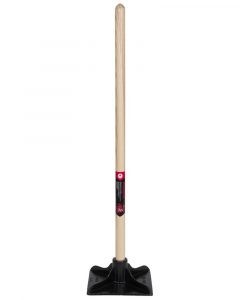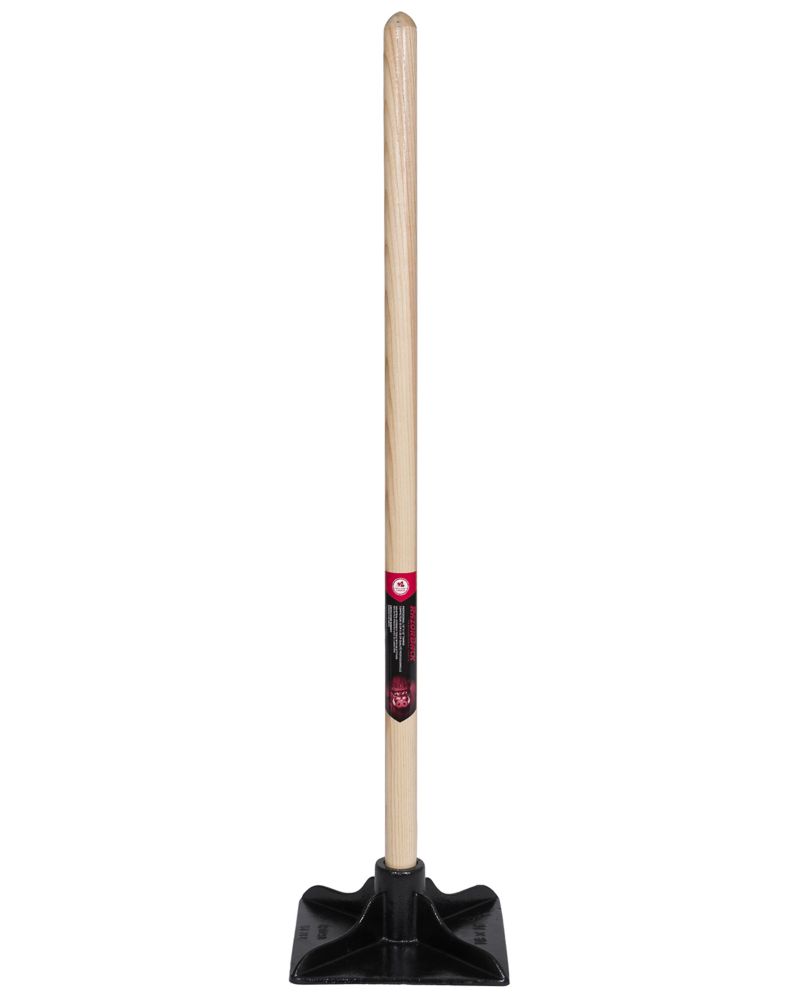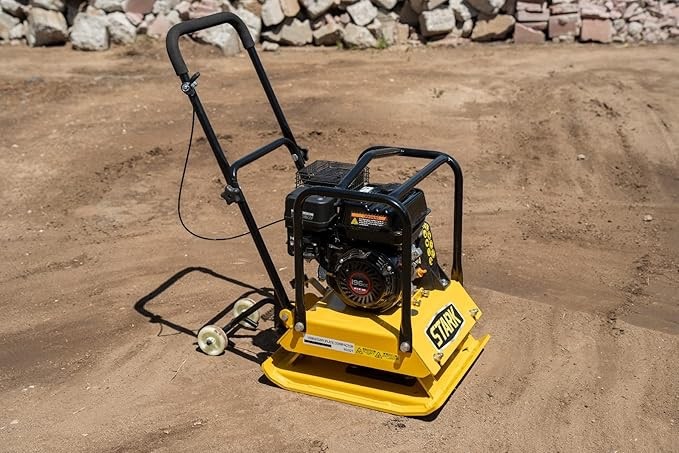It’s both disheartening and wasteful if your lawn doesn’t establish a strong root system, as that compromises its health.
This is why soil tamping is essential when laying sod since it ensures there’s good contact between sod roots and soil, but how do you tamp down new sod?
You tamp new sod by slamming down the grass with a tamper to push sod roots into the soil and also to flatten out the edges of the sod. The best approach is to have one person to lay the sod and another to tamp it to avoid walking on newly installed sod.
Therefore, ensure you have a tamper tool readily available as it will come in handy and make your work more efficient.
How Do You Tamp New Sod?

You tamp new sod by pressing or slamming down new sod with a tamper tool while you lay each sod. It’s important to do so during the installation process because newly laid sods require time to take root, which means no stepping, sod rolling, or tamping it down for a few weeks.
It’s worth noting that, unlike tamping, you can roll new sod after installing the whole lawn.
The basic principles of tamping are:
- Make the surface as smooth and flat as possible by raking it.
- To aid better compaction, add some moisture to the ground, mainly if your lawn is made of sand.
- Hold your lawn tamper firmly with the help of your back and shoulders.
- Make sure you strike the surface using the flat head, keeping it from tilting on the side or corner. This helps avoid striking the soil with the edge of the tool and loosening it instead of making it compact.
- Ensure all the areas are compacted equally before completing the project.
- Keep your feet shoulder-width apart.
Should You Tamp Down New Sod?
Yes, you should tamp down new sod to ensure there’s proper contact between the soil and the new sod by using an empty roller to roll the soil lightly.
Alternatively, you can use a tamper tool to achieve the same result on your newly laid sod.
If possible, one person can lay the sod while another tamps it. Remember not to press or strike your tamper tool too hard because that will make the soil too compact, keeping the roots from penetrating the ground properly.
What Is A Tamper Tool?
A tamper tool is a power or manually operated compaction tool used to make gravel, soil, sand, among other materials, flat and raise their density.
The tool’s base features a considerably flat surface that has a back surface and a face surface with the face used to tamp the soil surface, compacting it. 
Moreover, it has one or multiple tines attached to and substantially extending perpendicularly to a horizontal plane of the flat plate’s face surface.
The flat plate’s perimeter forms a crescent shape with two pointed ends. This means the face surface strikes or presses the soil surface while the tines pierce the soil surface, and the flat plate’s crescent surface abuts the plant’s contour.
A tamper tool works with a force that you can deliver using your hands or through a gas-burning engine.
The majority of tamper tools function by striking the ground being compacted repeatedly while a few roll heavy weight over it.
Tamper Tools Types
Tamper tools come in various forms but serve the same purpose; they just accomplish this purpose in different ways.
Below are the types of tamper tools.
a) Long-Handled Manual Striking Tamper
This is a basic and the most common version of a tamper tool. It comprises an extended metal, fiberglass, or wooden-made vertical handle and a flat, heavy steel head.
This tool helps you tamper your new sod while giving you an excellent shoulder and upper back workout.
Use a long-handled manual striking tamper by gripping its handle with both hands while standing steadily with your feet shoulder-width apart.
Next, strike your new sod repeatedly using the tamper tool’s flat head until the soil is flat and firm.
b) Gas-Powered Walk-Behind Tamper
This is a considerably bigger, more costly, and more powerful variation of the manual tamper. It has a capable motor that produces massive force to compact your new sod effortlessly.
It’s an excellent and more convenient choice if you intend to compact a huge lawn since it will make your work easily manageable.
However, you won’t need a gas-powered tamper often unless you work in a professional setting. Therefore, it is smarter and more economical to rent one instead of buying one when you need it.
c) Rolling Tamper
This is an excellent choice if you don’t tamper your new sod manually or with the help of a gas-burning tamper machine. A rolling tamper has a big, hollow cylinder made of metal and an extended, angled handle.
It has sufficient weight to compact most surfaces because it is made to be filled with heavy material like sand. Moreover, it is effortless to use since the cylinder rolls on its axis.
You don’t have to buy it as you can easily rent it from your local hardware store.
What Is A Tamper Tool Used For?
A tamper tool is used to press or strike the soil to make it compact, thus increasing its density. Doing so ensures excellent contact between the roots of your new sod and the soil, making sure your grass stays firmly rooted in the ground.
In addition, a tamper tool allows you to create better subsurface roots seating within the ground. This ensures the structure of your sod above the soil surface remains stably in place while letting the roots grow properly to offer stability.
Conclusion
Tampering new sod is pretty straightforward as the only mistakes you can make are hitting the surface with the corner or side of the tamper tool and over compacting. If you do it correctly, the roots of your new sod will be able to penetrate the soil well, promoting the growth of a healthy, lush lawn.
Reference
- University of Florida, Institute of Food and Agricultural Sciences: Installing Sod.

Hey there, I’m Derek Schew, a writer for Lawnholic.com, where we cover everything and anything related to lawns. As someone who’s spent countless hours tending to my own lawn, I’m passionate about sharing my knowledge and helping others achieve the perfect yard. From lawn care tips to product reviews, I’m committed to providing our readers with the most accurate and up-to-date information available. So whether you’re a seasoned lawn enthusiast or just getting started, I invite you to join our community and discover the joys of a lush, green lawn.


